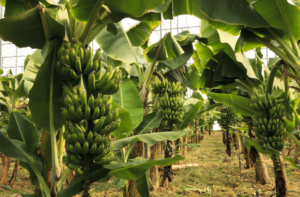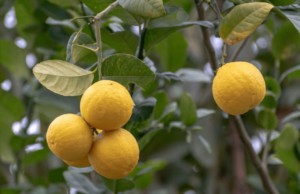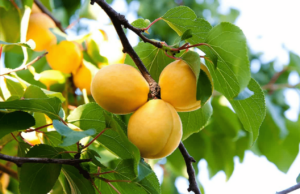Houseplant Care: Tips for Healthy Indoor Plants
When it comes to choosing the right plant for your space, there are several factors to consider. First and foremost, you need to take into account the amount of natural light that your space receives. If you have a bright, sunny spot, you may want to consider plants that thrive in direct sunlight, such as succulents or cacti. On the other hand, if your space is on the shadier side, you may want to opt for plants that are more tolerant of low light conditions, such as snake plants or pothos.
Another important consideration when choosing a plant for your space is the size of the plant. If you have a small space, you may want to opt for smaller plants or even consider hanging plants to maximize your space. Conversely, if you have a larger space to fill, you may want to consider larger plants or even trees to make a statement in your space. Additionally, it’s important to consider the overall aesthetic of your space and choose plants that complement the style and decor of your home or office.
Key Takeaways
- Choose plants that are suitable for the size and lighting conditions of your space
- Ensure your plants receive adequate light and water according to their specific needs
- Use well-draining soil and proper potting techniques to promote healthy root growth
- Maintain proper humidity and temperature levels to create an optimal environment for your plants
- Fertilize and prune your plants as needed to encourage healthy growth and flowering
- Take preventive measures to keep pests and diseases at bay, such as regular cleaning and inspection
- Troubleshoot common issues like yellowing leaves, wilting, and pest infestations promptly to prevent further damage
Providing Adequate Light and Water
Once you’ve chosen the right plant for your space, it’s crucial to provide it with adequate light and water to ensure its health and vitality. Different plants have different light and water requirements, so it’s important to do your research and understand the specific needs of your plant. In general, most plants require some amount of natural light to thrive, so be sure to place your plant in a location where it can receive the appropriate amount of sunlight.
When it comes to watering your plants, it’s important to strike the right balance. Overwatering can lead to root rot and other issues, while underwatering can cause wilting and other signs of distress. Again, it’s important to understand the specific needs of your plant and water accordingly. Some plants prefer to dry out between waterings, while others prefer consistently moist soil. Additionally, factors such as humidity and temperature can also impact your plant’s water needs, so be sure to take these into account as well.
Proper Soil and Potting Techniques
In addition to providing adequate light and water, proper soil and potting techniques are essential for the health and well-being of your plants. Different plants have different soil requirements, so it’s important to choose the right type of soil for your specific plant. For example, succulents and cacti require well-draining soil to prevent root rot, while tropical plants may require a more moisture-retentive soil mix.
When it comes to potting your plants, it’s important to choose a pot that is the right size for your plant and has proper drainage holes to prevent water from pooling at the bottom. Additionally, it’s important to repot your plants as they grow to prevent them from becoming root-bound and stunted in their growth. When repotting, be sure to gently loosen the roots and provide fresh soil to give your plant the best chance at thriving in its new pot.
Maintaining Humidity and Temperature
| Location | Humidity (%) | Temperature (°C) |
|---|---|---|
| Room 1 | 45 | 22 |
| Room 2 | 50 | 20 |
| Room 3 | 55 | 25 |
Maintaining proper humidity and temperature levels is crucial for the health and well-being of your plants, especially if you’re growing tropical or humidity-loving plants. If you live in a dry climate or have indoor heating that dries out the air, you may need to take steps to increase the humidity around your plants. This can be achieved through methods such as misting your plants with water, using a humidifier, or placing a tray of water and pebbles near your plants to increase moisture in the air.
In addition to humidity, temperature is also an important factor to consider when caring for your plants. Most indoor plants prefer temperatures between 65-75 degrees Fahrenheit during the day and slightly cooler temperatures at night. It’s important to avoid placing your plants near drafts or heating vents that can cause drastic temperature fluctuations, as this can stress your plants and lead to issues such as leaf drop or wilting.
Fertilizing and Pruning
Fertilizing and pruning are important aspects of plant care that can help promote healthy growth and encourage blooming in flowering plants. When it comes to fertilizing, it’s important to use a balanced fertilizer that provides essential nutrients such as nitrogen, phosphorus, and potassium. Different plants have different fertilizing needs, so be sure to research the specific requirements of your plant and fertilize accordingly. Over-fertilizing can lead to nutrient burn and other issues, so it’s important to follow the recommended guidelines for fertilizing your plants.
Pruning is another important aspect of plant care that can help maintain the shape and health of your plants. Regular pruning can help remove dead or diseased foliage, promote new growth, and encourage branching in certain plants. It’s important to use clean, sharp pruning shears when pruning your plants to prevent damage and disease transmission. Additionally, be sure to research the specific pruning needs of your plant, as some plants require minimal pruning while others may benefit from more frequent shaping and maintenance.
Preventing Pests and Diseases

Preventing pests and diseases is an important part of plant care that can help keep your plants healthy and thriving. One of the best ways to prevent pests and diseases is by practicing good hygiene and regularly inspecting your plants for signs of trouble. Remove any dead or diseased foliage promptly, as these can attract pests and spread disease to healthy parts of the plant.
In addition to good hygiene practices, it’s also important to avoid overwatering your plants, as this can create conditions that are favorable for pests and diseases. Proper air circulation around your plants can also help prevent issues such as powdery mildew and other fungal diseases. If you do encounter pests or diseases on your plants, it’s important to take swift action to address the issue before it spreads. This may involve using natural remedies such as neem oil or insecticidal soap, or in some cases, seeking professional help from a horticulturist or pest control expert.
Troubleshooting Common Issues
Even with the best care, it’s not uncommon for plant owners to encounter common issues such as yellowing leaves, wilting, or pest infestations. When troubleshooting these issues, it’s important to take a systematic approach to identify the underlying cause and address it accordingly. For example, yellowing leaves can be a sign of overwatering, nutrient deficiencies, or even root rot, so it’s important to carefully assess the overall health of your plant and make adjustments as needed.
In some cases, common issues such as wilting or yellowing leaves may be a sign of stress due to environmental factors such as temperature fluctuations or inadequate light. By carefully observing your plant and making adjustments as needed, you can help address these issues before they become more serious problems. Additionally, seeking advice from experienced plant owners or horticulturists can also be helpful in troubleshooting common issues and finding solutions that work for your specific plant and growing conditions.
In conclusion, caring for indoor plants requires attention to detail and a good understanding of the specific needs of each plant. By choosing the right plant for your space, providing adequate light and water, using proper soil and potting techniques, maintaining humidity and temperature levels, fertilizing and pruning as needed, preventing pests and diseases, and troubleshooting common issues as they arise, you can help ensure that your indoor plants thrive and bring beauty and vitality to your home or office environment.
FAQs
What are some general tips for caring for houseplants?
Some general tips for caring for houseplants include providing the right amount of water, sunlight, and humidity, using well-draining soil, and regularly checking for pests and diseases.
How often should I water my houseplants?
The frequency of watering houseplants depends on factors such as the type of plant, the size of the pot, and the environmental conditions. It’s important to check the soil moisture before watering and to avoid overwatering, which can lead to root rot.
What are some common signs that my houseplant needs water?
Common signs that a houseplant needs water include wilting leaves, dry soil, and a lighter weight pot. It’s important to water the plant when the top inch of soil feels dry to the touch.
How much sunlight do houseplants need?
The amount of sunlight houseplants need varies depending on the type of plant. In general, most houseplants thrive in bright, indirect light, while some may require more or less sunlight. It’s important to research the specific light requirements of each plant.
How can I increase humidity for my houseplants?
To increase humidity for houseplants, you can mist the leaves with water, place a humidifier nearby, or group plants together to create a microclimate. You can also use a pebble tray filled with water to increase humidity around the plants.
What are some common pests and diseases that affect houseplants?
Common pests that affect houseplants include aphids, spider mites, and mealybugs, while common diseases include root rot, powdery mildew, and leaf spot. It’s important to regularly inspect plants for signs of pests and diseases and to take appropriate measures to control them.


